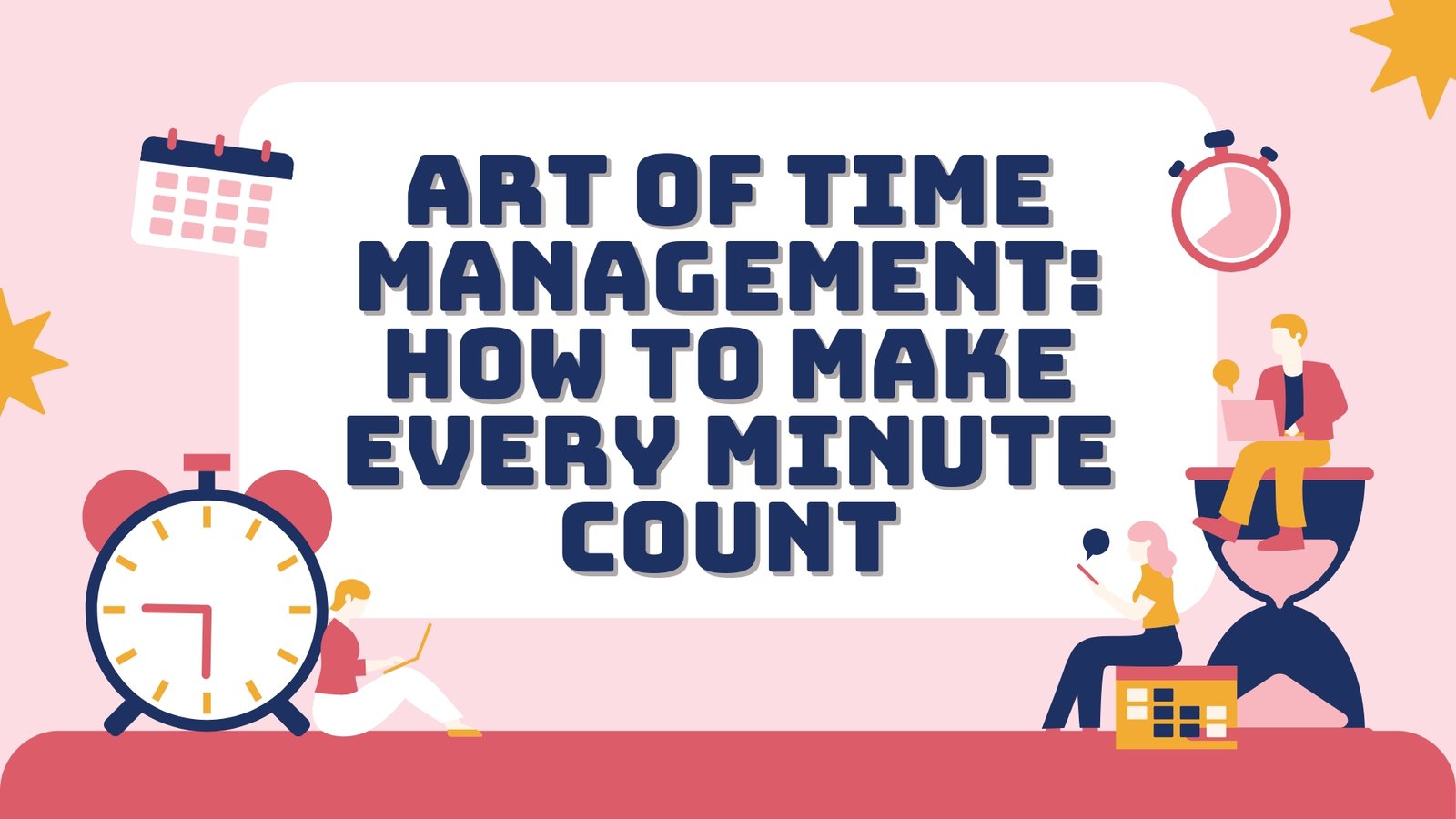

Art of Time Management: How to Make Every Minute Count
Time management is the backbone of effective teaching. Teachers juggle multiple tasks every day, from lesson planning to engaging students. It can feel overwhelming, but good time management makes everything easier. By using time wisely, you can achieve more without feeling stressed.
This blog will help you make the most of your classroom time. Whether you’re a new teacher or have years of experience, there’s always room to improve. Let’s explore practical tips, a handy checklist, and ways to self-assess your time management skills.
Why Is Time Management Important in the Classroom?
Time is a limited resource. Once a minute is gone, it’s gone forever. Managing time in the classroom means using it to help students learn more effectively. Good time management leads to:
- Better Learning Outcomes: Lessons are delivered more smoothly, and students stay focused.
- Reduced Stress: You feel less rushed and more in control.
- Balanced Activities: There’s time for everything—teaching, questions, and classroom discussions.
Simple Time Management Strategies for Teachers
1. Plan Your Lessons
Start with a clear plan. A lesson plan works like a roadmap. It helps you know what to teach, when to move on, and what activities to include.
- Divide your lesson into sections: introduction, teaching, activities, and recap.
- Use a timer or clock to stay on schedule.
- Have a backup activity in case students finish early.
Tip: Keep your plan simple but flexible.
2. Set Priorities
Not everything needs to be done at once. Focus on tasks that are most important.
- Prioritize teaching over administrative tasks.
- Use free periods to grade papers or plan lessons.
- Delegate non-essential tasks if possible.
Example: Instead of marking every single worksheet in detail, use peer reviews or group feedback.
3. Engage Students Quickly
Start the class with a quick activity to grab attention. It saves time and gets students focused.
- Use a thought-provoking question or a quick quiz.
- Share the lesson’s goals so students know what to expect.
Tip: Avoid lengthy explanations at the start.
4. Use Transition Words and Signals
Transition words guide students and save time. For example:
- “Next, we’ll move to…”
- “Let’s summarize what we’ve learned so far.”
- “Now, take two minutes to write your thoughts.”
Transitions keep lessons smooth and minimize confusion.
5. Minimize Disruptions
Interruptions eat up time. Address them early.
- Create clear rules for classroom behavior.
- Keep frequently used materials within reach.
- Plan transitions between activities to avoid chaos.
Example: Use color-coded bins for supplies so students don’t waste time looking for materials.
Self-Assessment: How Are You Managing Time?
Use the following questions to evaluate yourself:
- Do I plan my lessons ahead of time?
- Am I setting realistic goals for each class?
- Do I stick to the planned schedule?
- Are my students staying engaged throughout the lesson?
- Can I handle disruptions without losing too much time?
If you answered “no” to any of these, pick one area to improve first.
Furthermore, You can click here to read “Simple Classroom Management Tips for New Teachers“
Time Management Checklist for Teachers
- Plan your lessons.
- Prioritize important tasks.
- Start each class with an engaging activity.
- Use timers to stay on track.
- Minimize classroom distractions.
- Create smooth transitions between activities.
- Reflect on what went well and what didn’t after each lesson.
- Keep this checklist handy for quick reminders!
FAQs About Time Management in the Classroom
1. What if students don’t follow the schedule?
It’s normal for things to go off track sometimes. Refocus the class by reminding students of the timeline. For example, say, “We need to finish this activity in the next five minutes.”
2. How do I manage time during group activities?
Set a timer for each part of the activity. Announce the remaining time at intervals to keep everyone focused.
3. What can I do about frequent interruptions?
Establish rules for questions and behavior. You can also use hand signals or a “question box” for students to jot down questions to address later.
4. Is it okay to skip parts of the lesson plan?
Yes, if it helps meet learning objectives. Flexibility is key, but don’t make it a habit.
5. How do I manage time for grading and planning?
Use tools like templates or rubrics to speed up grading. Plan lessons during non-teaching hours, and avoid multitasking to stay efficient.
Personal Note: Let’s Recap
We’ve explored the importance of time management in the classroom. You’ve learned to plan lessons, prioritize tasks, engage students, and handle disruptions.
Now, let’s take a moment to reflect. Are you ready to try these strategies? Start small. Pick one or two ideas and apply them this week. You’ll see a big difference.
Remember, you’re not alone in this journey. Every teacher faces challenges, but with the right tools, you can succeed. You’ve got this!
Special Offer for All Teachers Click Here.
Take Action Now
Ready to transform your teaching? Join our community to get more informative blogs for teachers and learn advanced strategies! Click here to join!
Time is precious. Let’s make every minute count!
Barkha Sachdeva is a B.Com(Hons) graduate from Delhi University. Passionate about crafting content, she enjoys writing about fashion, beauty, technology, and travel. With three years of content writing experience, she possesses valuable insights and ideas in these domains.







Post Comment